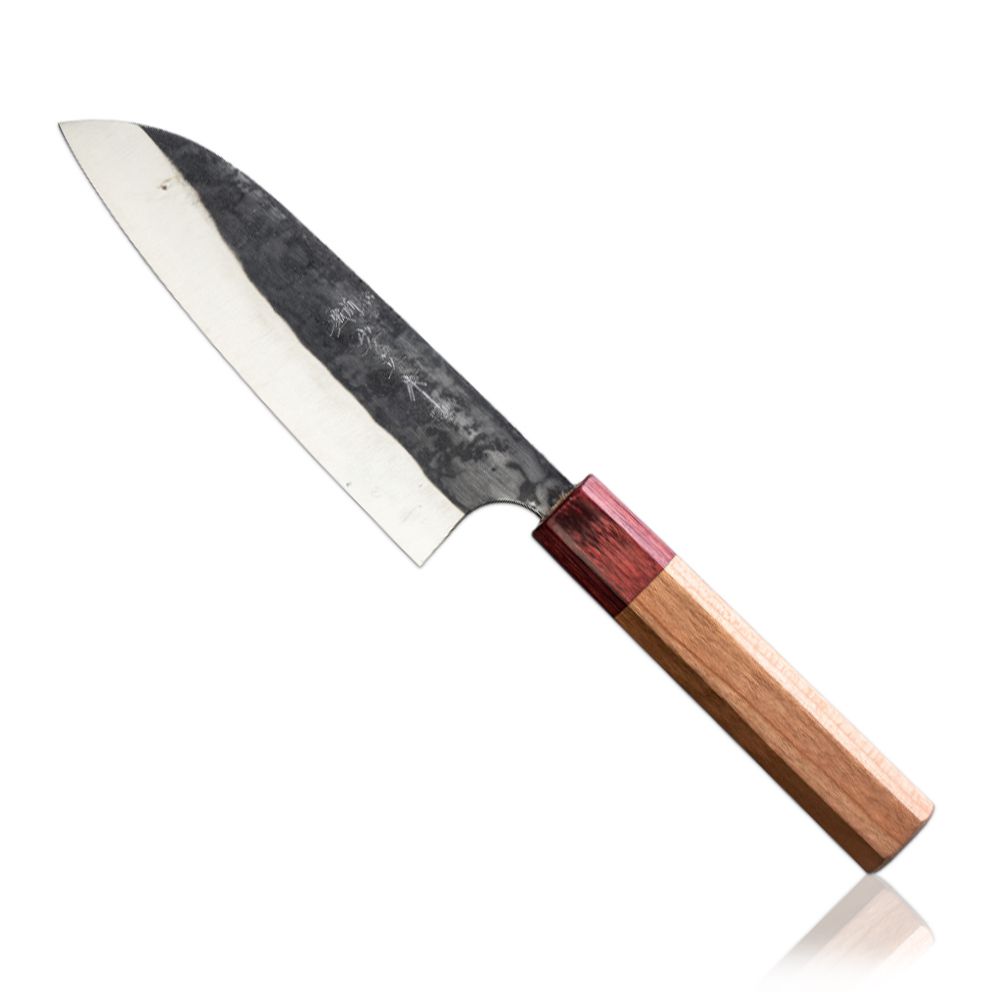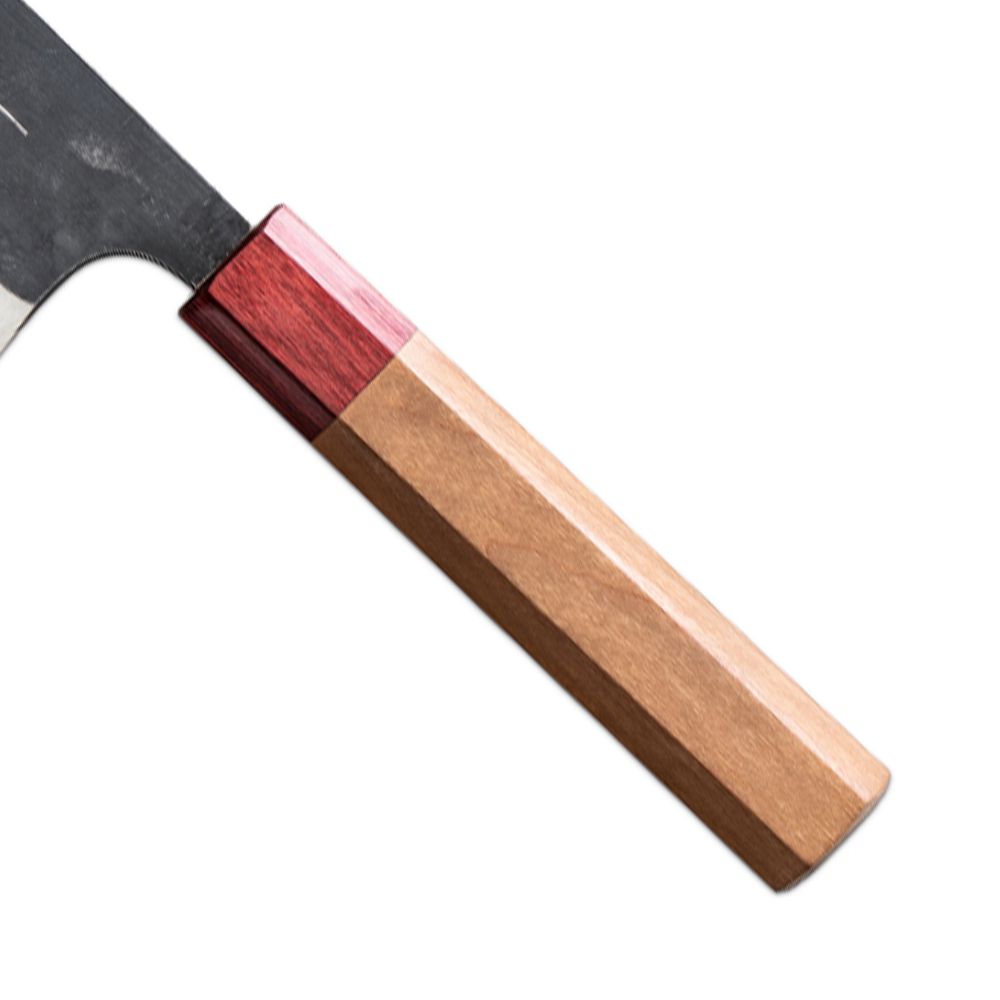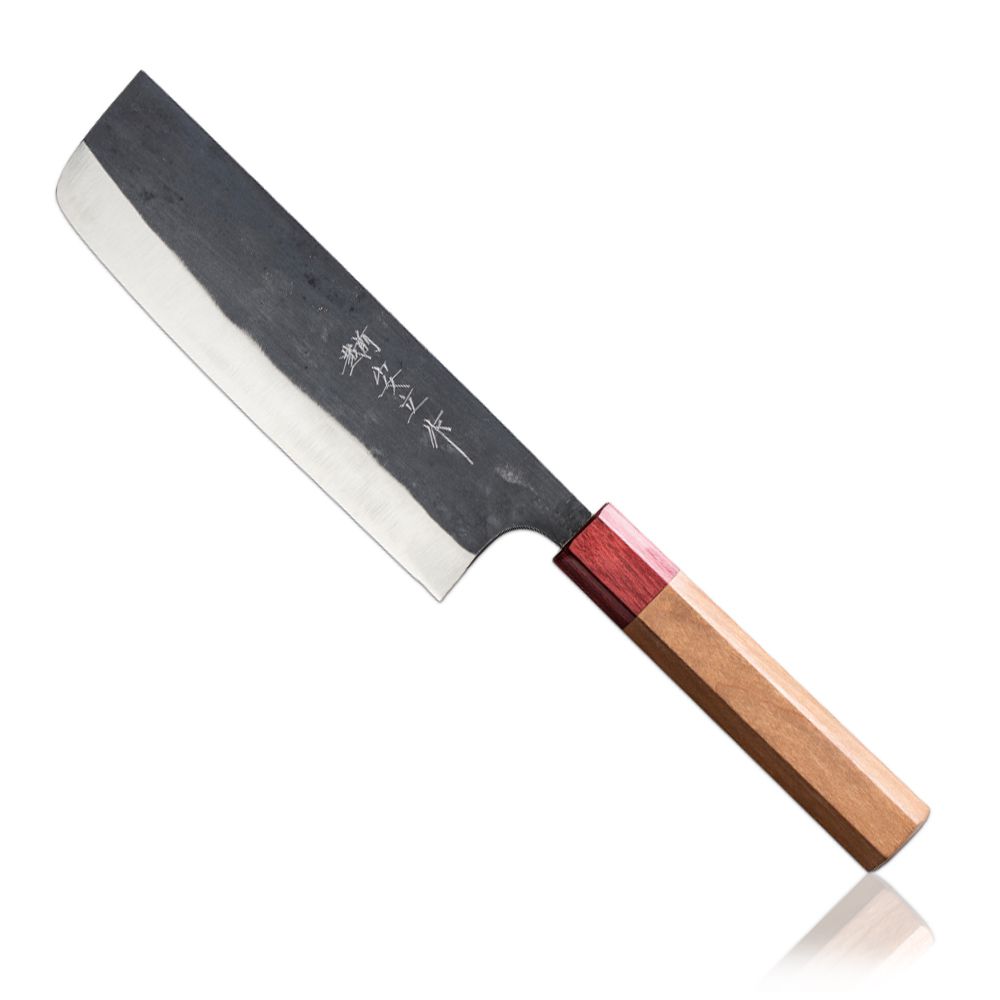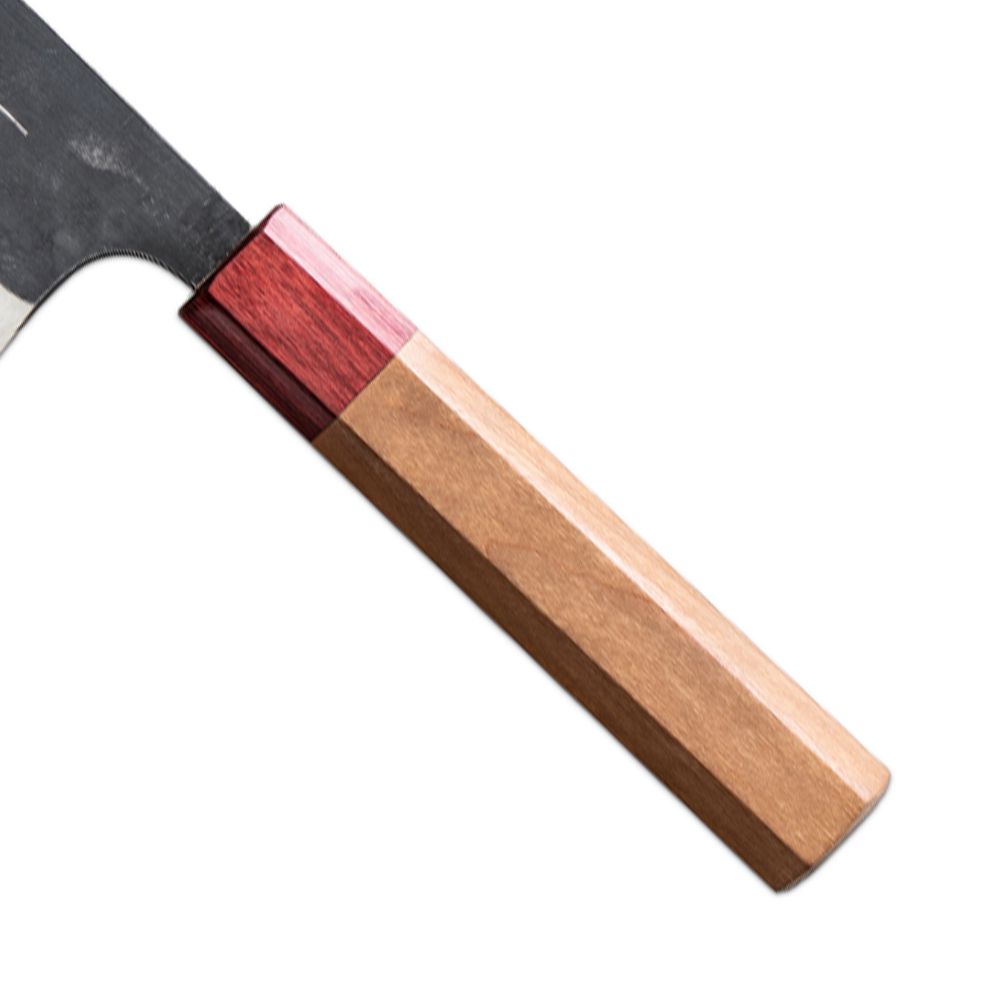
Kasumi Black Hammer Blue
The beauty of the blade, together with the octagonal handle, makes this knife so unique. KASUMI Black Hammer Blue are beautiful and extremely hot, they are perfect for every type of preparation in the fine kitchen. Sumikama Cutlery, the innovative traditional Japanese manufacturer, is the "inventor" of the Damascus kitchen knife series with its Kasumi knives.
Kasumi Black Hammer Blue, large - Santoku
€379.90*
Kasumi Black Hammer Blue - Santoku 16.5 cm, large - The large Santoku the Japanese classic, a real all-rounder, for cutting fruit and vegetables as well as for fish and meat. The special processing gives the knife a special hardness (61 ° HRC). The core of the blade is made of Aogami steel and contains high carbon, which is commonly referred to as carbon steel and is not stainless steel. The handle consists of two different colors, made in an octagonal shape, the old traditional handle shape in Japan and has a durable and at the same time luxurious finish.
Knife type: paring knife
Blade length: 16.5 cm
Total length: 31.2 cm
Blade shape: smooth edge
Hardness: 61 ° HRC
Cut: wedge cut (V-cut)
Handle: wood in octagonal shape, red-brown wooden sleeve
Seki, the capital of the Japanese cutlery industry, is located in the center of the Japanese archipelago.
The history of the Japanese cutlery industry in Seki began almost 800 years ago. The first swordsmiths existed in Seki as early as 1200. Seki was an ideal location for swordsmiths. There was everything on site that was needed to forge a sword, the necessary ore, enough good wood and fresh, clean water from two large rivers.
This method of sword forging was unique in Japan at the time. Swords from Seki are of very high quality and have always been characterized by a very good quality.
The traditional Japanese technique of sword making has been passed down from generation to generation to this day. These techniques are still used today in the manufacture of Kasumi knives.
All Kasumi knives are exclusively sharpened with high quality whetstones.
Sharpening instructions for Japanese sharpening stones
Let the stone soak in the water for 15 minutes. The stone should always be wet while grinding, you can also sprinkle it with a little water. The water acts like a lubricant on the stone.
The knife should be at an angle of 10-20 degrees to the grindstone. Then the knife is pulled over the stone, i.e. pushed back and forth with light pressure.
During the grinding process, a powder is created that enables the grinding process, similar to how the soap foam cleans the hands.
Knives ground on one side are ground 80% at the front and 20% at the back, while those ground on both sides are ground at 70% at the front and 30% at the back. Where the front is right for right-handers and left for left-handers. (We have many knives that are sharpened on one side and saw knives, also for left-handers).
After the sharpening process, the knife should be washed well with lukewarm water and then dried off. Traditionally, the highest quality Japanese knives are not rustproof. Always make sure that your knives are never wet.
All Kasumi knives are oiled regularly and as required with a neutral blade oil. If the knife is not used for a very long period of time, the oil film on the knife should be checked or replaced at certain intervals.
Kasumi Black Hammer Blue, large - Santoku
€379.90*
Kasumi Black Hammer Blue - Santoku 16.5 cm - The large Santoku the Japanese classic, a real all-rounder, for cutting fruit and vegetables as well as for fish and meat. The special processing gives the knife a special hardness (61 ° HRC). The core of the blade is made of Aogami steel and contains high carbon, which is commonly referred to as carbon steel and is not stainless steel. The handle consists of two different colors, made in an octagonal shape, the old traditional handle shape in Japan and has a durable and at the same time luxurious finish.
Knife type: paring knife
Blade length: 16.5 cm
Total length: 30.6 cm
Blade shape: smooth edge
Hardness: 61 ° HRC
Cut: wedge cut (V-cut)
Handle: wood in octagonal shape, red-brown wooden sleeve
Seki, the capital of the Japanese cutlery industry, is located in the center of the Japanese archipelago.
The history of the Japanese cutlery industry in Seki began almost 800 years ago. The first swordsmiths existed in Seki as early as 1200. Seki was an ideal location for swordsmiths. There was everything on site that was needed to forge a sword, the necessary ore, enough good wood and fresh, clean water from two large rivers.
This method of sword forging was unique in Japan at the time. Swords from Seki are of very high quality and have always been characterized by a very good quality.
The traditional Japanese technique of sword making has been passed down from generation to generation to this day. These techniques are still used today in the manufacture of Kasumi knives.
All Kasumi knives are exclusively sharpened with high quality whetstones.
Sharpening instructions for Japanese sharpening stones
Let the stone soak in the water for 15 minutes. The stone should always be wet while grinding, you can also sprinkle it with a little water. The water acts like a lubricant on the stone.
The knife should be at an angle of 10-20 degrees to the grindstone. Then the knife is pulled over the stone, i.e. pushed back and forth with light pressure.
During the grinding process, a powder is created that enables the grinding process, similar to how the soap foam cleans the hands.
Knives ground on one side are ground 80% at the front and 20% at the back, while those ground on both sides are ground at 70% at the front and 30% at the back. Where the front is right for right-handers and left for left-handers. (We have many knives that are sharpened on one side and saw knives, also for left-handers).
After the sharpening process, the knife should be washed well with lukewarm water and then dried off. Traditionally, the highest quality Japanese knives are not rustproof. Always make sure that your knives are never wet.
All Kasumi knives are oiled regularly and as required with a neutral blade oil. If the knife is not used for a very long period of time, the oil film on the knife should be checked or replaced at certain intervals.




